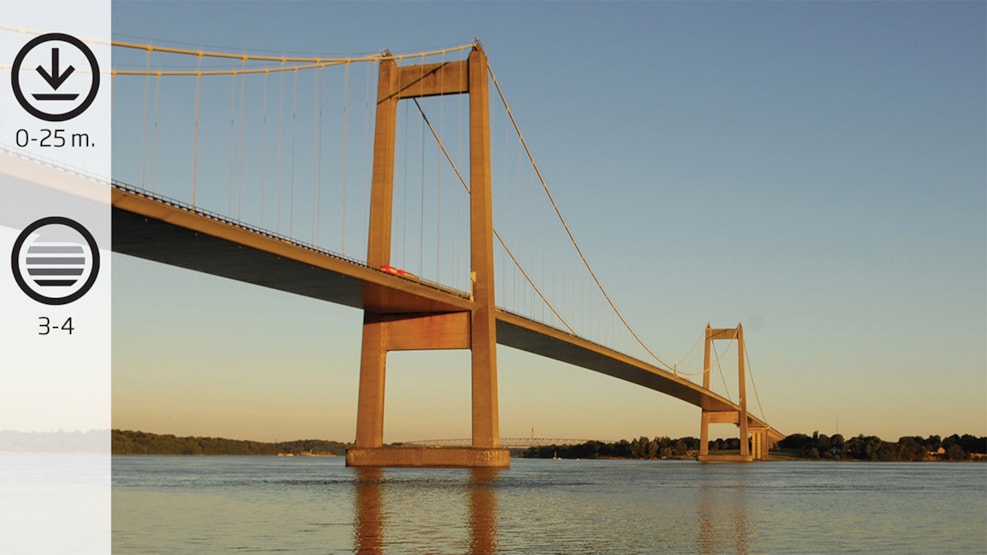
Diving spot New Lillebælt Bridge
Lots of life on the bridge pier: large plumose anemones, sea squirts and common mussels. Seascorpions and many small fish. Strong tide – the best dive is from a boat. Fair chance of seeing porpoises and seals from the boat.
Facts:
How to find: Coming from E20, take Exit 59 and turn right at Snoghøj Landevej. Then turn to left at Vesterballevej, which becomes Lyngsoddevej. At the end of Lyngsoddevej you reach the parking space and a slipway for your boat.
Geocoordinates:
Longtitude: 9.7447901983
Latitude: 55.519246312
Google Earth Coordinates:
Latitude: 55°31'9.24"N
Longtitude: 9°44'40.90"Ø
Getting in and up the water: At the end of the boat dinghy
Highlights: Bridge pier
Air filling station: You can get your airbottle refilled at Hindsgavl Camping in Middelfart (open all year round) during opening times: Hindsgavl Camping. Alternatively ask the local diving society in Middelfart, Tel.: +45 3311 1323
Best season: All year round
Dangerous areas: Watch out regarding getting up away from the bridge pier – boat is recommended
Tide: Can be very strong
Level of difficulty (1-5): 3-4
Permissions: None
The new Lillebælt bridge
The Bridge, which was inaugurated in 1970, is the first bridge in Denmark with heated lanes. It is hereby kept ice free in winter and the two large pylons are firmly anchored in Lillebælt.
Especially these two pylons are exciting diving spots. It is possible to dive at the bridge pier closest to Jutland from the landside, but due to the distance and the strong tide in the area, it is not recommended. It can be very difficult to reach the pier by swimming from the landside. You will get a much better not to mention much safer dive by diving at the piers by boat.
By using a boat, it is also possible to dive at the pier sheltered from the tide, and still have a really good dive. The seabed surrounding the pier is mostly gravel, due to the strong tide. But you will also find a container which was used for concrete, which is beautifully overgrown, even though it is very rusty. At the seabed, you will spot the flatfish that prefer the more gravelly seabed, such as turbot. The pier itself is covered in mussel, sea squirts, plumose anemones and different kinds of seaweed.
Here you can spot sea scorpions or other small fish. So if you look closely on the way up and down, your dive will pass quickly. It is a good idea to bring a lamp, it will then be easier to examine the darker parts of the bridge pier.
If you swim away from the pier, then swim towards the landside, as the seabed is more attractive this way than further out in the belt. Here you will find beautifully overgrown rocks.
Please remember – it is much safer to dive from a boat. Especially if you lose contact with the bridge pier and a free ascent towards the surface is necessary. Always bring a deco buoy when diving here.
While waiting on the boat, you might be lucky to spot porpoises or seals. This is the place to meet these two mammals, especially during the summer or autumn period.